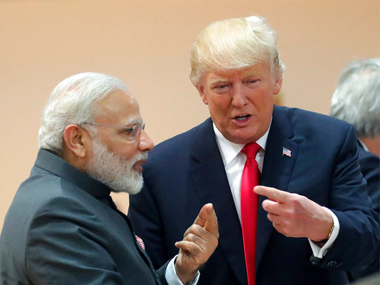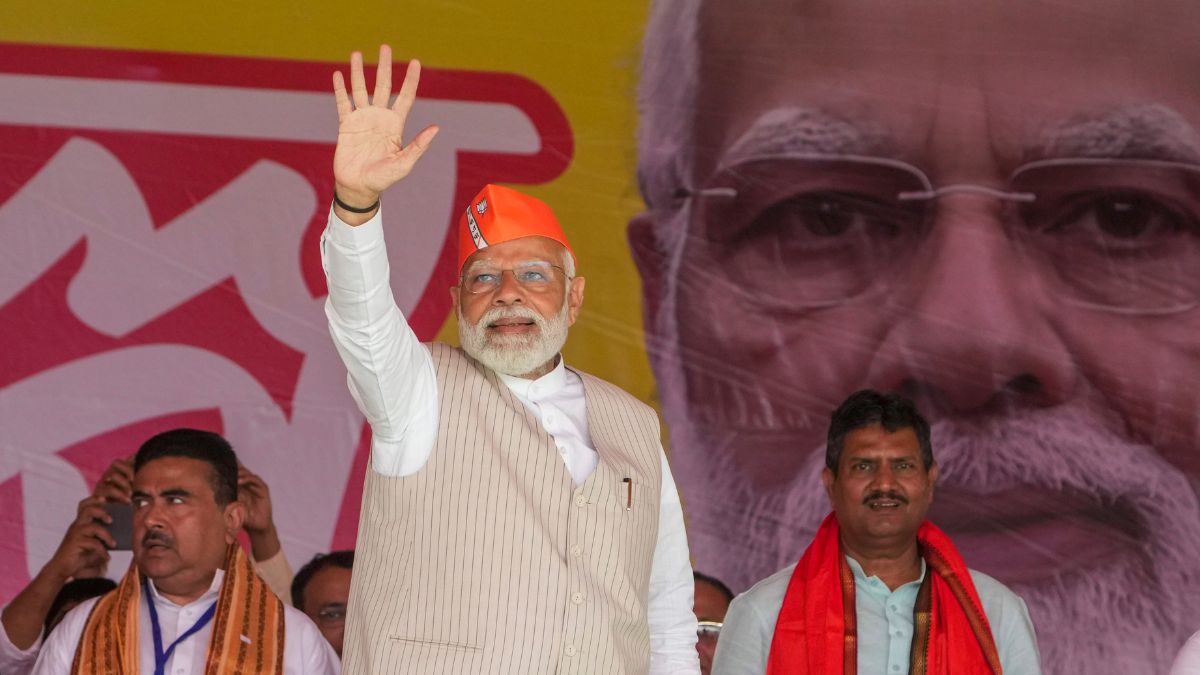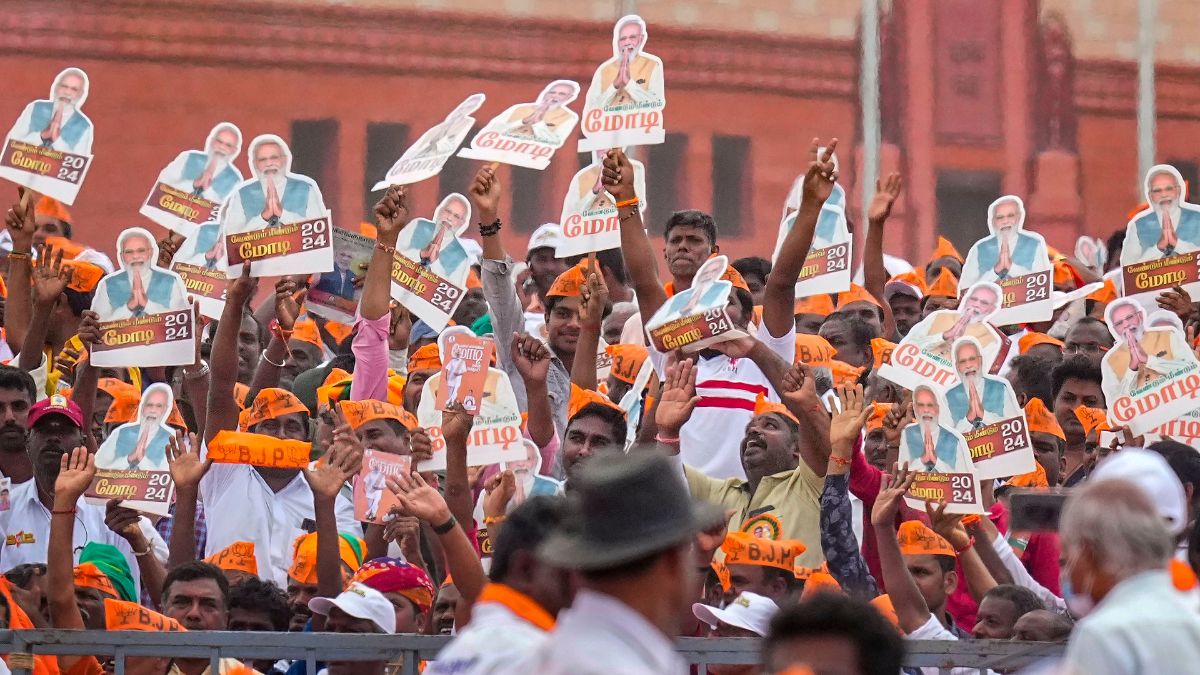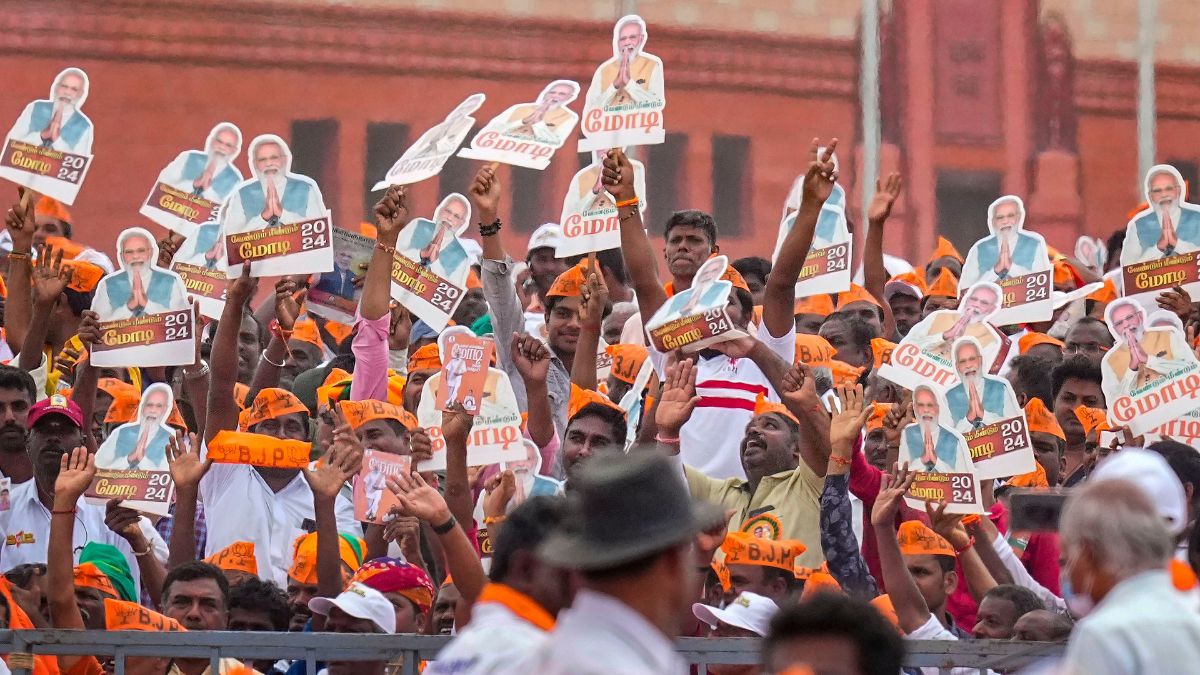Editor’s note: Prime Minister Narendra Modi’s tour of the Maldives was his first international visit after having taken oath for the second time. His 2014 swearing-in ceremony featured leaders from SAARC nations as special invitees, while in 2019, it was the BIMSTEC leaders and those from Kyrgyzstan and Mauritius who were in attendance, underlining the importance the prime minister places on international relations. This is the fifth in a series of articles that looks at key foreign policy targets for the Modi government as it looks to the next five years.
***
Narendra Modi has begun his second innings as the Prime Minister at a moment when the Donald Trump administration’s unilateralist impulses are at its peak. As Trump’s campaign for the US presidential election next year is likely to be more muscular and nationalistic than Modi’s, India’s relationship with the United States is at a crossroads. Despite plenty of positive momentum, many sticky issues threaten future progress in India-US relations.
On the brighter side, ties between India and the US have improved remarkably in the last two decades with a convergence of views on many issues. Successive presidents from Bill Clinton to Donald Trump have ensured that the project of deepening ties between the two nations remains on track.
Immediately after assuming his presidency, Trump began to woo India as a strategic counterweight to China. The former US Secretary of State Rex Tillerson had famously declared in 2017 that India and the US were “two bookends of stability - on either side of the globe.” This was seen as the boldest statement in favour of a strategic partnership between the two nations to counter China’s growing global influence.
The term ‘Indo-Pacific region’ has now replaced the term ‘Asia-Pacific region’ in American foreign policy lexicon. The Trump administration has consistently described India as one of its major allies in the Indo-Pacific region; it renamed the former US Pacific Command as Indo-Pacific Command, emphasising the strategic linkage between the Indian and Pacific Oceans. And just before the parliamentary elections, India opened a new ‘Indo-Pacific division’ in the Ministry of External Affairs.
There has been a growing realisation in Washington’s policy circles that closer ties with India can make the US stronger once again in Asia where China has begun to flex its military muscles. The Trump administration has made India eligible for defense-related technologies under a “strategic trade authorisation,” going a step further than the Obama administration which had designated India as a “major defence partner”.
Modi’s previous tenure witnessed a series of defence-related agreements that would enable the two countries’ militaries to work closely. Continuing the momentum, the Modi government will like the US to help India add more teeth to its military capabilities. This is particularly important for India to become a net provider of security in the Indo-Pacific region, a key US objective.
The Basic Exchange and Cooperation Agreement (BESA), the last of the three “foundational agreements,” is likely to be signed soon. Logistics Exchange Memorandum of Agreement (LEMOA), which allows the Indian and American forces to use each other’s facilities, was signed in 2016. Communications Compatibility and Security Agreement (COMCASA), which allows the US to transfer communication equipment to India that allow secure transmission of data and real-time information, was signed during the inaugural 2+2 talks in 2018.
India is also planning to expand its fleet of P8-I maritime aircraft besides preparing to buy Sea Guardian and MQ-9 Reaper drones from the US. Some other US defense sales to India include MH-60R Seahawk helicopters, Apache helicopters and M777 howitzers. On the other hand, Washington is pushing for the sale of F-16 or F-21 to India.
American concerns about Xi Jinping’s most ambitious geopolitical project — Belt and Road initiative — has found an echo in New Delhi. India and the US seem determined to counter China’s maritime expansion, which is being seen as a threat to their trade routes in the Indian and Pacific oceans. Beijing is increasingly using the carrot-and-stick policy to increase its geopolitical influence in South Asian countries and the Indian Ocean region, while China is busy building infrastructure in Pakistan, Myanmar , Bangladesh and Sri Lanka .
It is expected that at the end of this year India and the US will conduct a new bilateral tri-services exercise, which was announced at 2+2 dialogue. Last month, two Indian naval ships - INS Kolkata and INS Shakti - had participated in a joint naval exercise with the US, the Philippines and Japan. This significant naval event has been viewed as India support to the Philippines in its claims over disputed parts of South China Sea.
The Quadrilateral grouping which includes Japan and Australia has been revived with meetings being held at regular intervals. The Trump administration has been more vocal than previous administrations when it comes to the US support to New Delhi’s fight against terrorism: When a terror attack in Jammu and Kashmir’s Pulwama had almost brought India-Pakistan to the brink of a military conflict, the US publicly extended its support for India’s countermeasures.
The listing of Jaish-e-Mohammed leader Masood Azhar as an international terrorist by the United Nations is an example of uncritical American support to India. The Trump government wants the International Monetary Fund (IMF) to reinforce the Financial Action Task Force (FATF) demands on Pakistan. By taking irreversible steps to shut down the terrorist groups, the White House made it clear to Islamabad that the onus for regional peace is on Pakistan. In other words, American views on Pakistan seem a lot closer to India’s thinking, and this is an achievement.
Therefore, Modi finds it far easier to cultivate friendship with the US as support for closer ties with America has grown among India’s strategic elite. Following his tremendous electoral victory, Modi will find more manoeuvring space to resist Chinese assertiveness while deepening ties with US. But it does not mean that the relationship is free of frictions. Despite an unmistakably positive turn in Indo-US relations, Modi will find that the US is mounting pressure on India on multiple flanks.
In Trump’s America, bullying allies seems to have become the norm in foreign policy. The Trump administration’s tactless approach towards its West European allies by degrading the North Atlantic Treaty Organisation (NATO), threatening to impose tariffs on the European Union goods in connection with trade disputes, and unilateral withdrawal from the Iran nuclear deal against European consensus are just a few visible examples of the mindless application of ‘America first’ policy. Moreover, the fast-approaching trade war with Mexico is nothing but a shocking development because higher tariffs on Mexican goods will chip away the strength underlying the US-Mexico trade relationship. With Washington flexing its economic muscles, India has begun to face heat.
New Delhi has been forced to stop concessional oil imports from both Iran and Venezuela, and these heavy-handed American tactics have led to sharp rise in India’s oil import bill. But more than that, the US attempts to undercut India’s strategic ties with Iran is going to pose serious challenges for the Indian foreign policy. The common concerns of India and Iran about threats of Jihadist terrorism emanating from Pakistani territory make Iran an important geopolitical partner of India.
India’s attempts to reach Central Asia are also likely to suffer if New Delhi’s ties with Tehran show a downward trend. So far, the US has exempted Iranian port of Chabahar — which bypasses Pakistan to create a transportation corridor to Afghanistan — from punitive sanctions, but many in India remain deeply suspicious of America’s future intentions. If the Chabahar port stops receiving preferential treatment, it would be a classic case of short-term American unilateralism trumping long-term strategic thinking.
The US has also been critical of India’s bid to purchase Russian made S-400 air defense system. Washington argues that if India buys the S-400 systems, it will violate the Countering America’s Adversaries Through Sanctions Act (CAATSA); America’s ties with the Turkey are also under strain as the latter is planning to buy the same S-400 system. The former US defence secretary James Mattis was the biggest advocate for presidential waiver for India, but his absence from the Trump administration has made the threat of CAATSA sanctions a real possibility.
The biggest challenge New Delhi faces is that if it defies American diktat, there can be economic sanctions as well as restrictions on high-tech defence cooperation with Washington. But if India cancels the S-400 deal, its traditional ties with Russia are bound to suffer. The Modi government’s attempts at diversification of defense inventory will receive a jolt if the US occupies a sizable proportion of India’s weapons imports.
India has been a huge beneficiary of the Generalized System of Preferences (GSP) program, but the Trump administration is planning to end it. The GSP is a preferential trade program which gives developing countries like India easier access to American market by reducing duties on their exports. American trade demands include lifting price controls on knee implants, heart stents and other medical devices. Washington also wants India to relax e-commerce rules. Many rounds of talks on a comprehensive trade package have failed to yield any breakthrough.
While India was upset by the steel and aluminium tariffs imposed by the Trump administration last year, New Delhi’s decisions on data localisation has upset the US companies. As unemployment is rising and economic growth has fallen in India, the voices critical of Trump’s unilateral trade policies will only grow in the coming months.
It is the most important and immediate task before S Jaishankar, the new external affairs minister, to convince the Trump administration officials that its hard-line trade policies will only cloud the geopolitical promise of a closer strategic alignment between two liberal democracies. The US Secretary of State Mike Pompeo is planning to visit New Delhi to prepare the ground for a meeting between Modi and Trump on the sidelines of the G-20 meeting on 29 June at Osaka. He needs to be told firmly that if trade tensions persist, the very foundation of Indo-US strategic partnership will be called into question, and serious doubts will be raised about America’s commitment to friendship with India. It is not in Washington’s interests if trade frictions powerfully drive Indian domestic political debates in policymaking toward the US.
There is no doubt that a strong relationship with the US is in India’s interests. So far, the strength of a defence relationship has allowed the overall relationship to endure the jolts on the commercial side. But America’s provocative and unilateral actions on the commercial side will only exacerbate the Modi government’s challenges in balancing India’s multifaceted relationships with Iran and Russia. If the thinking in Washington is that these actions would force India to become more closely aligned with the American position, then it is fundamentally flawed.
Perhaps most importantly, the real danger is that if the Trump administration does not soften its stance toward India, it may end up projecting America as an unreliable and insensitive partner. Hyper-nationalism and the promise of reviving old civilisational glory have fundamentally defined the motivational structure of Modi’s foreign policy. Therefore Modi is not unaware that America’s narrowly-conceived actions can revive the dormant tendency in India’s diplomatic establishment for the vigorous pursuit of ‘strategic autonomy’.
The India-US ties have gathered momentum fuelled by strategic realities and political convergence. Military exercises between the two countries have become more sophisticated and elaborate. Therefore, leaders on both sides need to chart out a vision of what is achievable over the next half decade, with concrete steps along the way. The interlocutors of the Modi government must convincingly argue that a long-term American commitment to India in the Indo-Pacific region is the only way to prepare India as a counterweight to China in Asia.
***
Part I: India’s foreign policy targets with respect to Pakistan
Part IV: Expanding bilateral ties with Bangladesh vital for New Delhi’s ‘Act East’ targets


)




)
)
)
)
)
)
)
)